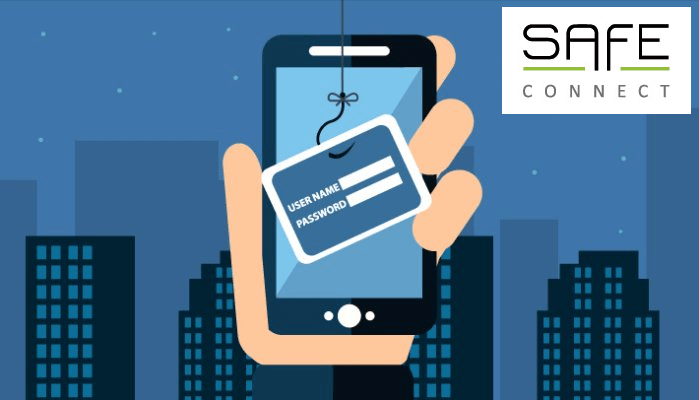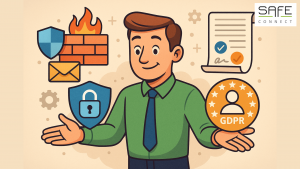Home » Security » What is Smishing? The next form...

What is Smishing? The next form of cybercrime?
Home » Security » What is Smishing? The next form of cybercrime?
Users are increasingly exposed to cybercrime. Phishing is the most popular method of stealing important data. This form of digital fraud has been around since 1995, sounds familiar and is unfortunately very effective. Smishing is a variant of this technique and is becoming increasingly popular. What is Smishing exactly?
A quick recap: Phishing in a nutshell
Phishing is a well-known method: cybercriminals ‘fish’ for sensitive information such as passwords, payment details and pin codes via e-mail or websites. They gain the victim’s trust by impersonating a recognized party or organization. When users enter their login details and other important information on these malicious websites, the criminals have secured their catch.
In this blog, you find an overview of different types of Phishing!
What is Smishing?
You can almost guess: Smishing is the contraction of Phishing and SMS. In addition, it follows the same process as Phishing, but instead of an email, it uses a text message.
How does it work?
Smishing is used in a variety of ways. Obviously, it starts with a text message. Do they use a regular phone number for this? Attention: red flag number 1. This is because authorized services usually use a 4-digit number.
For example, the message refers to a fraudulent website or asks you to install an app. Through these channels they try to steal your data. They often capitalize on the emotions as well. In this case they ask you to send money quickly to someone in need. Scammers may even pretend to be an acquaintance or family member in order to gain the victim’s trust.
Due to Covid-19, we were forced to accelerate digitally. In Belgium, we see that digital identification with Itsme is necessary for many applications and services. Smishers take advantage of this too by, for example, telling users that their Itsme account will be blocked if they don’t act. Chances are you’ve already received this type of message (several times).
Is Smishing more dangerous than Phishing?
The goal remains the same, but according to many, Smishing carries just a little more danger. That’s because it occurs on smartphones. Users often think that their mobile devices are more secure than computers. That’s not the case. We are also often less alert on our mobiles because everything goes so easily and quickly. This is exactly why Smishing has become popular with criminals at lightning speed.
What to look out for
There are some details that may indicate a fraudulent message. For example, a strange phone number is used, it asks for urgent action or to update sensitive information such as your bank PIN. The less time users have, the less time they have to think critically. That is where the dangers of Smishing lie.
Being aware of the dangers is the most powerful weapon against this type of cybercrime. We previously wrote a blog about digital hygiene. This is how you protect yourself and your organization from Smishing and other forms of digital threats.
Cybersecurity and GDPR: how these 2 worlds are connected
Home » Security » What is Smishing? The next form...



